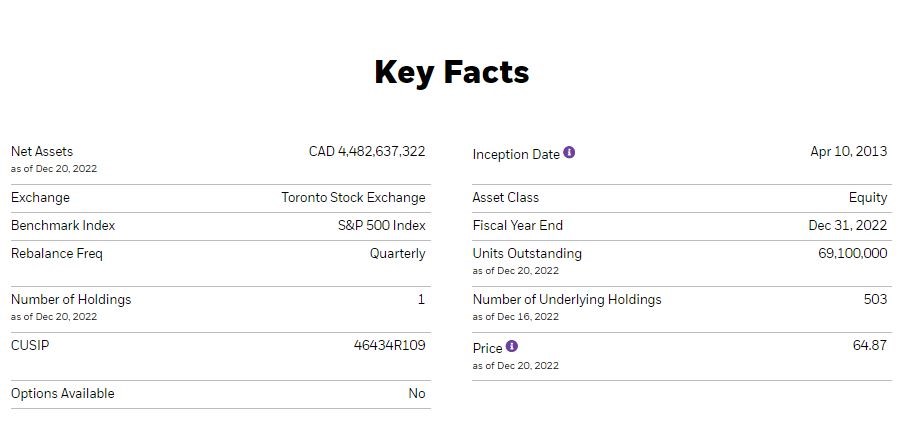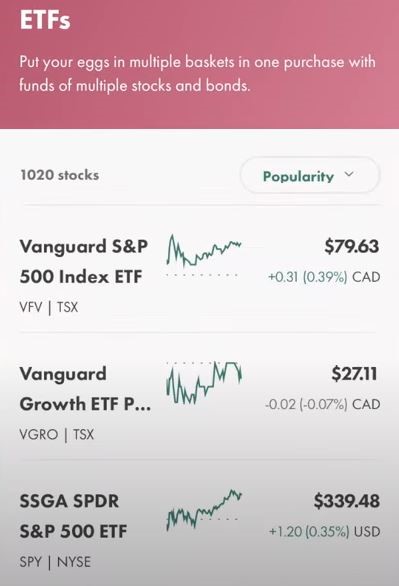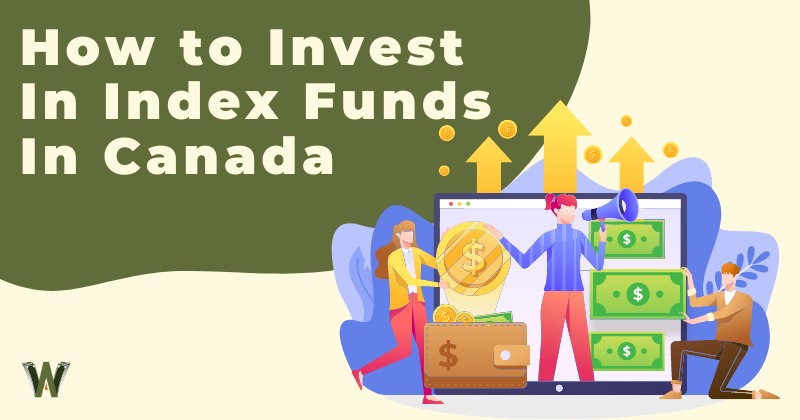Are you thinking of investing in index funds in Canada but have no idea how to get started? Index funds are passive pooled investments (typically exchange-traded funds) that look to track an index – a basket of investments.
Morningstar estimates that 35% of open-ended investment funds are passively managed as of late 2022. With ETFs becoming more and more popular, the percentage of passively-managed assets has grown sharply over the past decades.
The steps for investing in index funds in Canada are:
- Open an account with a discount brokerage in Canada
- Research the index funds that you would like to purchase
- Trade the funds that you would like to buy
- Monitor your portfolio over time
I will cover how to invest in index funds in Canada below and take you through a step-by-step guide on how to add passive exposure to your portfolio.
Why Invest in Index Funds?
With 80% of active US stock mutual funds underperforming their benchmark in 2021, index ETFs are a way to invest in a broad group of investments without having to pay hefty fees.
Passive index funds come with several advantages over comparable actively managed mutual funds, including:
- Lower fees, in the form of low management expense ratios
- Typically higher tax efficiency as a result of lower portfolio turnover
- For ETFs, the ability to trade the fund like a stock makes them easier to trade
While actively-managed funds (mainly mutual funds) aim to outperform their benchmark, passively-managed index funds (mainly ETFs) simply offer investors the return of the underlying index or market.
Although active funds have generally underperformed over the long term, they may be able to add value in the short term due to a portfolio manager’s skill. Active portfolios can be more tactical with their underlying investments, allowing skilled managers to sometimes add value during difficult market environments.
How to Invest in Index Funds in Canada
Before you are able to invest in index funds in Canada, you will need:
- Savings that you are looking to invest
- An account opened at a discount brokerage in Canada
- Research around which index funds to buy
Step 1: Opening an Account with a Discount Brokerage in Canada
Before you are able to invest in an index fund or trade any investment on your own, you will need to have an account opened with a discount brokerage. Opening an account with most major Canadian discount brokerages is extremely straightforward and can be done online in most cases.
For most brokerages, the requirements to open an account are:
- Being a Canadian citizen, Canadian resident, or having a valid Canadian visa
- Meeting the age of majority in your province
- Having a Social Insurance Number (SIN)
- Providing a Canadian residential address
- Having appropriate identification documents
You will have to make two important choices here: which discount brokerage to use in Canada as well as what type of account to open.
Choosing a Discount Brokerage in Canada
Discount brokerages in Canada are very popular and there are a lot of options to choose from. This is essentially the trading platform that you will be using to buy your index funds initially and then to monitor them over time.
Since discount brokerages do not offer advice, one of the main considerations when choosing which one to use is the amount of trading commissions that the platform charges. While most discount brokerages are not commission-free, there are a few options that exist.
One of the best commission-free trading platforms that I highly recommend is Wealthsimple Trade or Questrade.
You can also check out my guide on the best trading platforms in Canada for additional options.
Choosing an Account Type
The type of account that will be housing your index funds is also an extremely important choice to make when getting started at a discount brokerage. Opening up an account will require you to outline what type of account you are looking to open.
In most cases, you will be opening an individual account. Some common examples of account types include:
- Non-registered account
- Tax-Free Savings Account (TFSA)
- Registered Retirement Savings Plan (RRSP)
- Registered Education Savings Plan (RESP)
Accounts other than the non-registered account typically come with substantial tax advantages. Make sure to do your research to determine what type of account is best for you (and what kinds of accounts you are eligible for).
Once your account is opened, it is time to continue on to the next step.
Step 2: Researching the Index Funds that you would like to Purchase

Choosing an appropriate index fund (or a mix of multiple funds) is the most important part of this guide. Since index funds can be drastically different and can invest in many different underlying investments, they will be the main contributor toward the gains or losses in your account.
Index funds can have different underlying asset classes, including:
- Stocks
- Bonds
- A mix of stocks and bonds
Before you even start thinking about picking a fund, you will have to assess your current financial situation and what your goals are (essentially, why are you looking to invest?).
Make sure to consider the following, among others:
- How long are you planning to invest for
- How important the invested money is to you
- How well can you handle market volatility (more specifically, drops in the value of your investment)
- If you will need to have the ability to access your investments over time (liquidity)
- If you will need regular income from your investment
Be sure to take a look at my guide on how to start investing in Canada.
Once you have assessed your personal situation, it is time to look at more investment fund-specific attributes.
Key elements of a good index fund typically include:
- A long performance track record
- Low fees, as shown by the fund’s management expense ratio
- A large number of underlying holdings for better diversification
- Geographical diversification across multiple countries or regions
- A high yield, if this is something that you value
- A large amount of assets under management
- A risk rating that matches your risk tolerance
Most of these fund characteristics can be found on the investment manager’s website under each specific fund, which will look something like this:

You can also usually find a lot of relevant information about a fund through a fund’s required documentation (by law here in Canada). These can include fund facts documents and monthly reports.
If you are looking for some ideas to get you started, you can take a look at my article on the best low-cost index funds in Canada. Once you have decided on one or more index funds that you would like to invest in, it comes time to actually buy them and add them to your account.
Step 3: Trading your Researched Index Funds

Before trading your index fund, make sure you know whether you are buying it in Canadian dollars or US dollars. Investments and funds that are listed in the US (or US dollar-denominated) will have to be purchased in US dollars.
The two most important types of trades when it comes to index funds are limit orders and market orders.
Market Orders: Buying Instantly without Control over Price
Market orders are one of the most common types of orders that you will encounter among regular investors, although it is not necessarily the best type of trading order.
A market order requires outlining how many units of an ETF you would like to buy. You will then be shown an estimated cost for the transaction, after which your order will be submitted and executed once confirmed.
A market order will be executed instantly once it is submitted. Since prices of investments and funds are constantly fluctuating, you will receive the price that is quoted for a fund at the exact moment once your trade is executed.
If you are looking to purchase an index fund that is massive and trades frequently, there will probably not be many issues with using a market order.
The bid-ask spread for massive and frequently-traded ETFs is pretty tight, meaning that you should be able to buy your investment at a price that is close to what you can see on your screen.
If you are trading a smaller index ETF that is illiquid and does not trade often, using a market order may cause you to buy a fund at a much different price than what you are able to see on your screen.
If you are in a rush to purchase an investment, a market order is one of the best ways to do so.
Limit Orders: Controlling Price but not Timing
Limit orders are a way to control what price you are buying a fund at (per unit) but not when the trade gets executed. They are an invaluable way to approach buying less liquid and smaller funds.
A limit order will allow you to input what price you are looking to purchase a fund at, which may mean that the trade is not executed immediately. If you submit a limit order to buy a fund at a price that is lower than what it is currently trading at, you will be added to the fund’s order book.
The order book contains limit buy and limit sell orders at various prices, which are filled over time as the price of an investment fluctuates. If a fund’s price never reaches the price that you have submitted in your limit order, you will not be filled.
If you submit a limit order at a price that is very close to the price at which an investment or fund is trading, the chances of your order being filled in a timely manner are much better.
The video below outlines both market and limit orders.
Orders through discount brokerages in Canada can be placed over the phone, by going online, or through a mobile device. Most discount brokerages have intuitive platforms that make placing an order for a stock or an ETF very straightforward.
Step 4: Monitoring your Portfolio

Once you have bought one or more index funds, it is important to monitor your portfolio over time. Your portfolio’s investment exposure will change as different asset classes increase and decrease over time.
Especially if your portfolio contains different asset classes, such as stocks and bonds, they will likely grow at different rates over time, and your percentage allocation to both stocks and bonds will be different than when you started investing.
You will want to consider rebalancing your portfolio at regular intervals throughout your investment journey. A good rule of thumb is to take a look at your portfolio at least annually to see how your allocation to different asset classes has changed.
It is also a good idea to monitor your portfolio for other things, such as income being paid out (in the form of distributions) and potential stock splits if you hold stocks directly.
Lastly, you will also want to be conscious of any changes that are happening with regard to your personal financial situation. Changing circumstances may cause you to become more risk-averse or more risk-seeking.
As a general example, when investors get older over time, their investment time horizon begins to shrink and risk tolerance tends to decrease.
Conclusion

Buying low-cost index funds in Canada is a great way to get investment exposure without the hefty fees that more expensive pooled funds charge (actively-managed mutual funds).
With the investment industry being extremely competitive, asset managers are not only bringing index fund costs down to record lows, but they are also designing index funds to track more and more investment indices.
Investing in index funds in Canada is very straightforward and involves opening an investment account, researching the funds you would like to buy, trading the funds, and finally, monitoring your funds over time.
If you are looking for more ETF ideas to potentially research and invest in, be sure to read my comprehensive guide on the best ETFs in Canada for some of my top picks.

